Before I come to the main topic of this week’s blog – Maritime Kent, both the conference and postgraduate opportunities – I thought I would mention that Dr Claire Bartram is in talks with Professor Elaine Hobby (Loughborough University) about holding the 2023 Aphra Behn Europe Society conference jointly at CCCU and Kent.
This will build on Professor Hoby’s extensive work on Behn and other forgotten women writers, as well as that of Professor Catherine Richardson’s (University of Kent) doctoral student Charlotte Cornell, who is researching Behn’s early life in Canterbury. Moreover, it will feed into Claire’s own interests and those of others in English at CCCU concerning women writers in early modern and modern Kent.
Turning to Maritime Kent, it was great to be able to welcome about sixty people in person and another forty online to the Maritime Kent: Charting New Waters conference last Saturday. At this point I would like to record my thanks and that of the audience members to the staff, Calis, Anna, Dena and Kim, at Touchdown for opening especially for the conference. It was such a great help to have facilities like this on site, and it meant we were able to keep to a fairly tight timetable throughout the day.
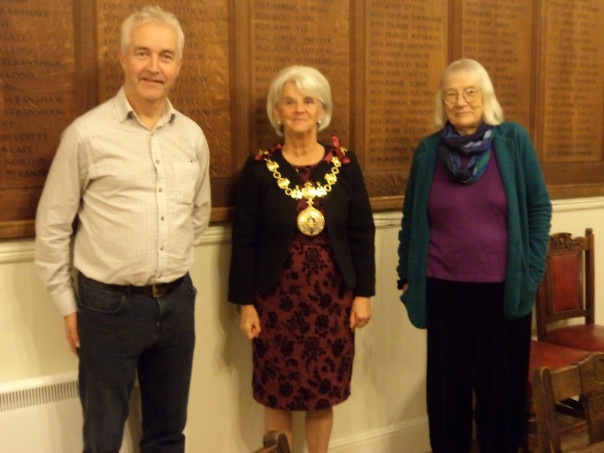
I should also like to thank Dr Diane Heath for her support and assistance during the day and similarly from my fellow editors of the volume which we were also celebrating. Thanks, too, to all our speakers and it was excellent to be able to have several contributors to the volume in the audience as well. Consequently, in my welcome and introduction, I included a special thanks to the volume’s sponsors, the Kent Archaeological Society, The William and Edith Oldham Charitable Trust and Peter Hobbs, as well as to Peter Sowden and his colleagues at Boydell.
Our first session was chaired by Stuart Bligh, a fellow editor and former Head of Research at the National Maritime Museum, who introduced Professor Andrew Lambert’s lecture on the strategic defence policy of the British government in the long nineteenth century and Kent’s place within it in terms of commanding the northern seas. This drew on and developed ideas from his chapter in the book, most particularly the centrality of the dockyards at Chatham, as well as the complementary capabilities at Sheerness, Dover and Deal. Moreover, the concept of the Harbours of Refuge, ostensibly for merchant shipping but far more for naval vessels was similarly part of Kent’s value to the Admiralty. As Andrew explained, the need and means to nullify the French threat, on occasion in tandem with that posed by Russia, was largely based on destroying their dockyards while expanding and strengthening those in Kent and in other coastal counties. In addition, this desire and indeed success in protecting the northern seas meant the important Baltic trade could take place, as well as that through the Scheldt Estuary. The latter was equally significant regarding the eventual setting up of the Belgium state, and the British policy of bringing in a system of checks and balances to ensure its neutrality and value as essentially a buffer state.
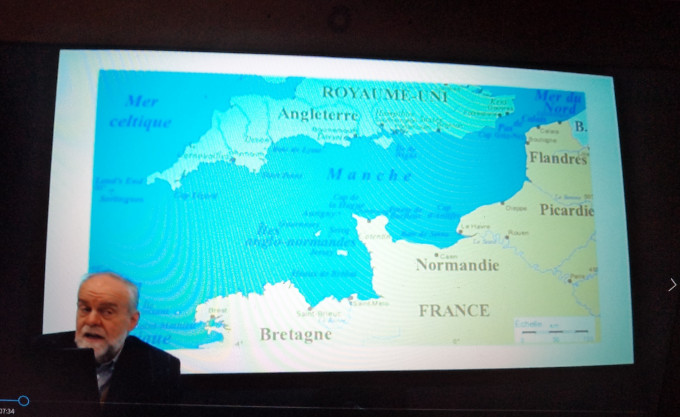
Thus for Kent, the naval dockyards and other supporting provisions, including increasingly the presence of the Royal Engineers at Chatham was a key development, the engineers being experts in not only destruction of (enemy) dockyards through annual exercises, but equally in their construction – the rebuilding of that recently blown up. Andrew was keen to highlight the decisive actions of the three statesmen he felt contributed so much to this strategy, Wellington having the strongest link to Kent through his position as Warden of the Cinque Ports, which meant that he frequently travelled from Walmer to observe and ensure progress at the various maritime works.
Andrew’s lecture brought several questions and having dealt with these and enjoyed a well-earned refreshment break, we next moved to a session on ‘Trading and Traders’ that I chaired. Furthermore, for the two presentations we had travelled back in time, hearing first from Dr Elizabeth Blanning about trade between the late Iron Age kingdoms and Rome, and the developments in trade following the occupation and the development of Roman Britain. Elizabeth, too, drew on material in her chapter, but as she said she was also able to incorporate very recent findings.
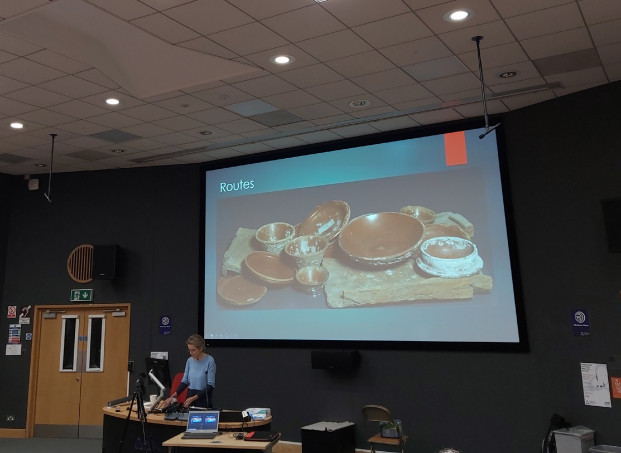
Among the points Elizabeth raised was just how much Britain was on the edge of the Roman world, indeed Julius Caesar was viewed as having crossed to another world beyond Ocean when he landed in Kent. Yet this ‘otherness’ had not stopped trade from taking place before this, albeit the archaeological record is limited. Of special value for this early trade are the finds of wine amphorae, two types having been identified across the periods of c.150-50 BC and c.75-10 BC.
Regarding the points of entry into Kent (and thus other parts of eastern and southern England), Elizabeth provided a clear history of Richborough’s development, the value of East Wear Bay at Folkestone as a natural harbour and Dover’s significance, even though it presented certain challenges for mariners and merchants. For the commodities traded, Elizabeth referred to Strabo’s contemporary list, as well as the archaeological record featuring quern stones and Samian ware. We also know something about the boats that carried these goods from actual finds of vessels such as the Blackfriars boat and from pictorial sources. And to end her presentation, Elizabeth explored what we know about the traders from the inscriptions found at votive altars at Domburg that include Valerius Mar__ who had traded with Kent and Boulogne.
Following Elizabeth’s fascinating talk, Dr Craig Lambert offered insights about Kent’s merchant fleet in late Tudor times, drawing on the records from TNA that have been used to compile his database. Of special value are the various port books, but ship surveys offer good data too and using these Craig had drawn up a series of tables to offer ideas about the relative significance of individual Kent ports, their place within the national picture and levels of continuity and change over Elizabeth’s reign. As you might expect Dover was well used, but Sandwich often eclipsed it, albeit there was an increasing need to tranship goods to be able to land them at the quay side. Craig looked at coastal trade which until these records is almost impossible to track, as well as overseas trade for which the customs accounts provide a considerable time depth.
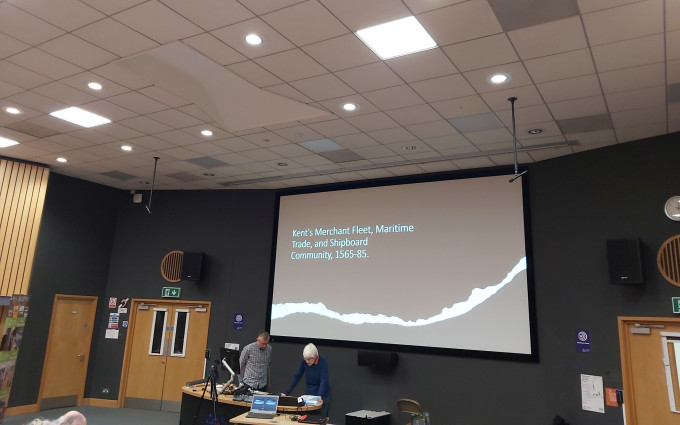
Like Elizabeth, he examined the goods traded, such as coal from Newcastle and wine from Boulogne, where the wine had already been brought from Gascony to Boulogne in Dutch ships where it was picked up by Kent ships. This network of interconnections was similarly true for the Baltic trade. Craig also mentioned the shipping of horses from Hythe to the continent, but goods shipped to London, including wheat and malt accounted for a large percentage of the trade from certain ports, including Faversham. To finish he similarly explored what we know about some of the merchants, offering a brief case study of William Ferrers of Erith and his frequent trading partner or associate Thomas Andrews of London. Both men were heavily involved in shipping tin from Cornwall to supply the pewter industry.
Consequently, it was extremely interesting to see just how many similarities there were between all three presentations in terms of the strategic importance of the Scheldt Estuary and the Baltic as entry and exit points for goods (and people), and the complexities of the webs of interconnections, as well as at times the deployment of long-distance trade. Then after the lunch break, we turned to a different aspect concentrating on maritime communities and the place of Black people in modern Kent.
For this third session Professor David Killingray was the first speaker and again he expanded upon his and Dr Ben Marsh’s chapter in Maritime Kent. He began by highlighting the diversity of the sources available and that it is important to look for pictorial evidence as well as texts. For this presentation he concentrated on Black children, those brought to England from their natal country and those born in this country who were recorded in parish registers such records also offering evidence about their parents. Among his examples was a Black youth who was originally in a painting at the Toke’s family house at Godinton but who was subsequent painted out, and a Black boy depicted in a painting as a boot blacker, what might be seen as an incidental detail but offers information about the type of work Black youngsters might undertake.
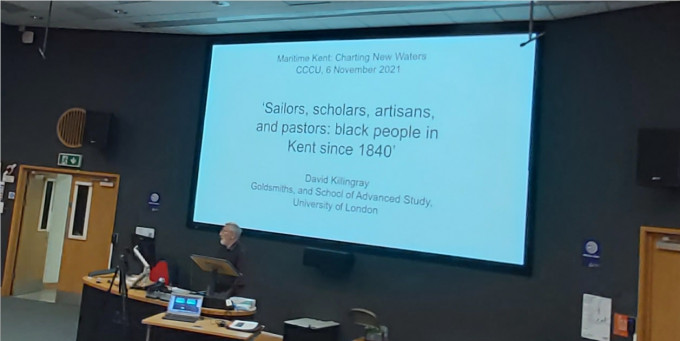
David’s other focus was education and what type of schooling some Black children received in Britain, and for this he highlighted the value of school photos, magazines and administrative records, as well as local newspapers. The latter might, for example, report on the presence of sons of African kings who had been sent to be educated in English public schools, and often the children of missionaries were similarly sent to boarding schools. As well as mentioning the Black Africans who had been at St Augustine’s Missionary College, he provided several case studies of Black Christians, whom we can trace through their own words, including conversion narratives, their activities in social campaigns such as the temperance movement, and their positions as Anglican clergy.
This was another fascinating talk and it was followed by Carol Stewart’s presentation on the role and work of the Medway African and Caribbean Association under the title “Lickle but we Talawa” meaning we are small but we are mighty. This Association has already celebrated its thirtieth anniversary, having started in the 1980s as a means to support Black families in the Medway area and to provide a means of enhancing the identity of this community at a time when living in the region was especially tough. The group’s foundations were laid on the activities of local Black senior citizens and their role within the Association remains key to its continuing success. The drop-in centre where people can tell their stories has always been important and has helped to develop oral history projects to such an extent that in 2019 the Association was able to hold a highly successful exhibition in conjunction with Chatham Historic Dockyard, drawing an audience of over 10,000 people. Indeed, this was just one of the many partnerships the Association has and continues to develop.
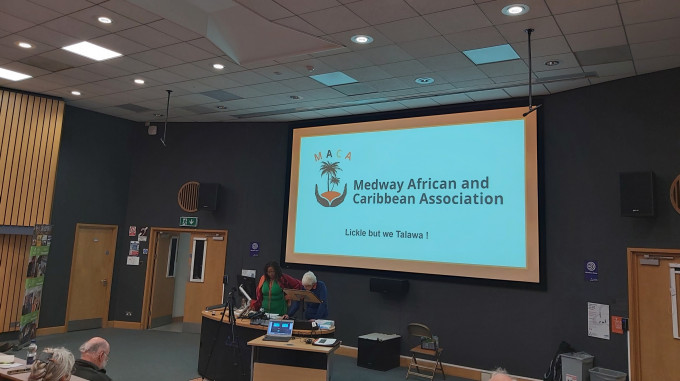
As Carol said, the Association’s work with and by young Black people is equally important and Young People United seeks to create an inclusive environment where youngsters from different backgrounds, ethnicities and identities can come and work together. To that end the annual Young Black Achievers awards and YPU Diversity Awards were established, and this initiative is similarly going from strength to strength. Part of what Carol believes is vital is to acknowledge the narratives of slavery and oppression, but to look beyond these as a way of highlighting the contributions Black people have made from the local to the global. Similarly, she considers Black History Month has a place but that it is confining and should be something that features right across the year.
Again, these two excellent presentations sparked a number of questions, some of which led into the Roundtable that followed the refreshment break. The Roundtable was chaired by Maritime Kent’s third editor, Dr Elizabeth Edwards who posed the question ‘the Way Forward?’. This produced considerable discussion involving both the panellists, which included Dr Margarette Lincoln, who is Curator Emerita at the National Maritime Museum, Greenwich, and those in the audience, part of which focused on ways to engage different audiences in maritime history. Among the suggestions were maritime festivals at specific ports, the use of workshops where those attending were engaged in activities. One idea posed was that the popularity of war gaming might be harnessed in some way to draw in those who might otherwise be uninterested in the subject. Other topics discussed included how it might be possible to work with trainee teachers, who might then deploy ideas about maritime communities across the curriculum, not solely in terms of history. Thus, those present recognised the challenges but also saw that the conferences and book were good starting points for the future.
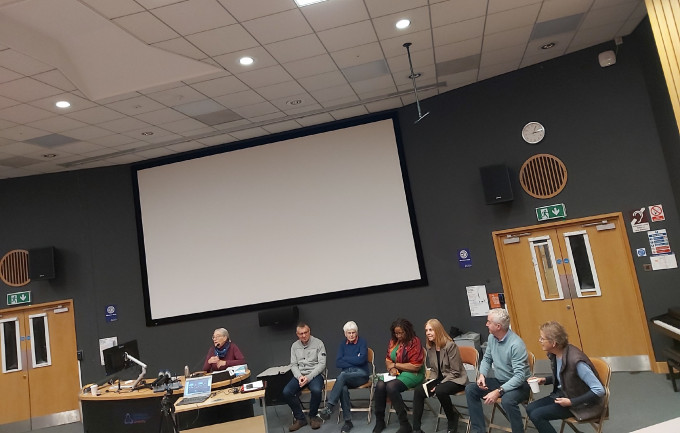
Thinking about the future, The Janus Foundation through the Centre’s Ian Coulson Memorial Postgraduate Award Fund wishes to provide financial assistance to two suitably qualified applicants to undertake a PhD, one full-time and the other part-time, who want to pursue a research topic closely associated with either: Kent’s maritime communities c.1350-c.1600, with reference to a specific community or communities OR Lossenham: the history and development of the Rother Levels. The idea is that these doctoral students at CCCU will start their chosen project early in 2022 and in the first instance anyone interested should contact me at sheila.sweetinburgh@canterbury.ac.uk for further details as soon as possible.
 Centre for Kent History and Heritage
Centre for Kent History and Heritage Sheila Sweetinburgh
Sheila Sweetinburgh 1653
1653

